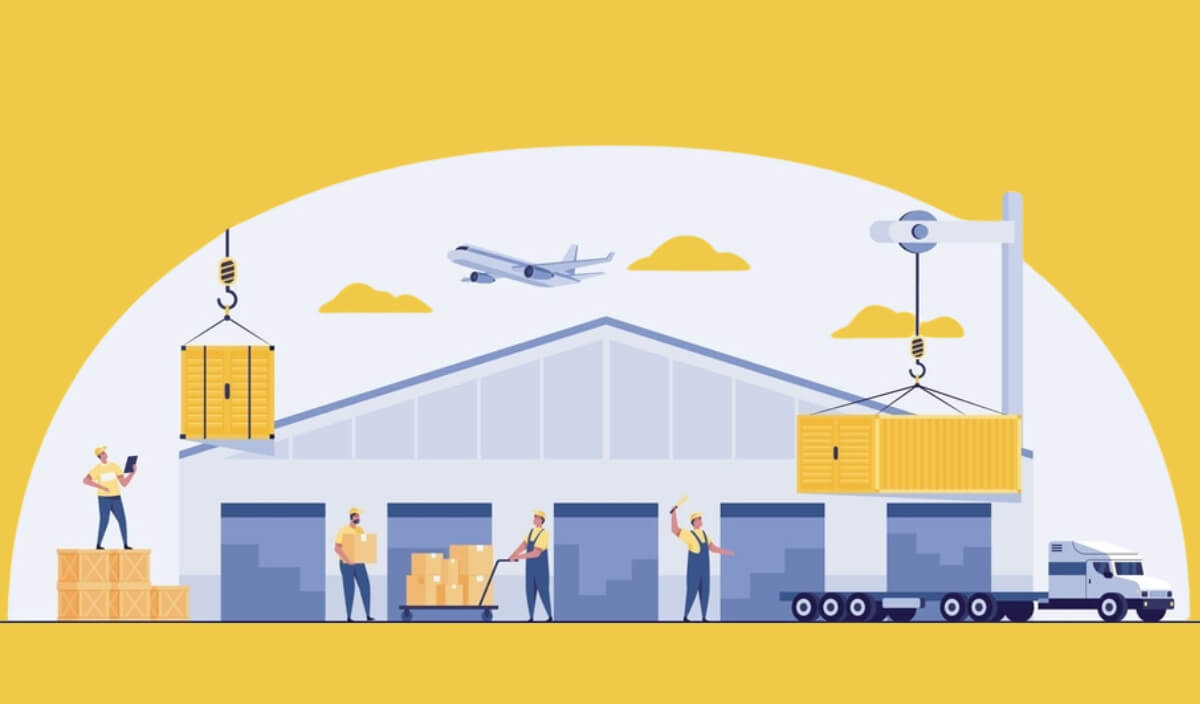
Efficiency and precision are paramount in logistics and supply chain management. Therefore, businesses increasingly rely on advanced technological solutions to ensure a seamless operation. Among these solutions are the Warehouse Management System (WMS) and the Transportation Management System (TMS).
Understanding Warehouse Management Systems (WMS)
Understanding Transportation Management Systems (TMS)
Key Differences Between WMS and TMS
What are the Benefits of Integrating WMS and TMS?
Conclusion
While both systems aim to streamline operations and enhance productivity, they serve distinct functions within the supply chain. Let’s explore below the differences, benefits, and significance of WMS and TMS.
Understanding Warehouse Management Systems (WMS)
A Warehouse Management System (WMS) is a software solution beneficial for optimizing the daily operations within a warehouse. It manages various warehouse functions, including inventory tracking, order fulfillment, and shipping. The primary goal of a WMS is to ensure that goods are stored and retrieved in the most efficient manner possible.
Key Features
- Inventory Control – WMS tracks inventory levels in real-time, providing accurate data on stock quantities and locations. It also facilitates cycle counting and stock replenishment.
- Order Fulfillment – With WMS in place, the picking, packing, and shipping processes are streamlined. It also improves accuracy and speed in order processing.
- Space Utilization – One of the key benefits of using WMS is warehouse space optimization. Through effective slotting and layout strategies, travel time within the warehouse is significantly reduced.
- Labor Management – Utilizing WMS enables accurate monitoring of workforce productivity and smooth assignment of tasks based on employee performance and workload.
- Reporting and Analytics – One of the key advantages of WMS is its ability to generate reports on warehouse operations and provide insights for continuous improvement.
Understanding Transportation Management Systems (TMS)
A Transportation Management System (TMS) is a software platform designed to manage and optimize the transportation aspects of the supply chain. This includes planning, execution, and tracking of shipments. The primary goal of a TMS is to ensure that goods are transported from origin to destination in the most efficient, cost-effective, and timely manner.
Key Features
- Route Optimization – Using TMS enables planning the most efficient routes for shipments. It also helps in minimizing costs and transit times.
- Carrier Management – With TMS, facilitating carrier selection and contract management becomes a breeze. It also ensures conformity to regulatory requirements.
- Freight Audit and Payment – Another great thing about TMS is that it automates the auditing of freight bills and streamlines payment processes.
- Real-time Tracking – TMS provides visibility into the location and status of shipments while enhancing communication with carriers and customers.
- Reporting and Analytics – Using TMS enables transportation performance analysis while identifying areas for coast savings and efficiency improvements.
Key Differences Between WMS and TMS
The TMS (Transportation Management System) and the WMS (Warehouse Management System) are two specialized software packages in supply chain management, each serving distinct purposes. The TMS is dedicated exclusively to managing transportation activities, focusing on the external logistics beyond the warehouse. In contrast, the WMS is specialized in managing internal warehouse operations, handling tasks such as inventory control, order fulfillment, and space utilization within the warehouse. While the TMS ensures efficient transport and delivery of goods, the WMS optimizes storage and internal processes.
Primary Focus:
- WMS – Concentrates on optimizing warehouse operations, including storage, inventory management, and order fulfillment.
- TMS – Focuses on optimizing transportation activities, such as route planning, carrier management, and shipment tracking.
Operational Scope:
- WMS – Operates within the confines of the warehouse, managing internal processes and resources.
- TMS – Extends beyond the warehouse, managing external logistics and transportation networks.
Key Metrics:
- WMS – Monitors metrics like inventory accuracy, order picking accuracy, and warehouse space utilization.
- TMS – Tracks metrics such as on-time delivery, transportation costs, and carrier performance.
Integration:
Both WMS and TMS can be integrated with other enterprise systems like ERP (Enterprise Resource Planning) for a comprehensive supply chain solution.
What are the Benefits of Integrating WMS and TMS?
Integrating WMS and TMS can provide a seamless end-to-end supply chain solution, offering several benefits:
- Enhanced Visibility – Real-time visibility into both warehouse operations and transportation activities leads to improved decision-making based on comprehensive data.
- Increased Efficiency – Streamlined processes across the supply chain reduce delays and errors through better coordination.
- Cost Savings – Lower operational costs through optimized inventory management and transportation routes enhance negotiation power with carriers and suppliers.
- Improved Customer Satisfaction – Ensure faster delivery of goods and higher accuracy in order fulfillment.
Conclusion
Both Warehouse Management Systems (WMS) and Transportation Management Systems (TMS) are essential for modern supply chain management. While they serve distinct functions, their integration can lead to a more efficient, cost-effective, and responsive supply chain.
Here at TFI, we believe that our clients and partners deserve the highest level of service in supply chain and transport management. So, we leverage our WMS and TMS to ensure seamless, accurate, and reliable operations.
Get in touch with our experts today to know more about how we can add value to your supply chain!



